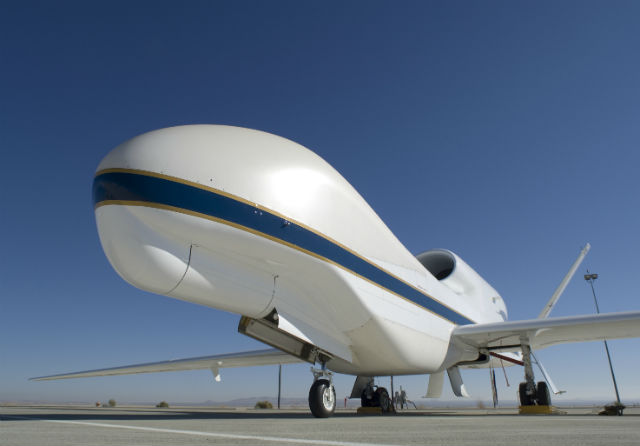A research effort is looking to develop an unmanned air vehicle-based capability that will allow scientists and meteorologists to track the movement of weather as it develops.
The Cloud-Map team, which consists of divisions from the universities of Oklahoma, Oklahoma State, Kentucky and Nebraska, is looking to create a tailored system for scientists, incorporating different elements of technology team members have previously developed into a low-cost package.The idea is to replace the role that weather balloons have, but in a mobile way so weather can be followed and tracked to better predict when and where it will develop.
“The goal is to develop this from an operational standpoint,” said Dr Jamey Jacob, professor of aerospace engineering at Oklahoma State’s college of engineering. “You can think of this as an on-demand weather balloon that you have control over,” he tells Flightglobal
Jacob adds that the aim of the research project is to develop a system that is accessible to scientists in terms of cost, size and capability.
The National Science Foundation awarded the team $6 million to carry out the four-year study which, alongside internal funding from the universities, will result in annual demonstrations of developments made, plus a final system that proves all the technological parameters.
Jacob says that it will be advantageous to have a swarm of UAVs flying to collect data from multiple standpoints.
Currently, scientists know when weather such as thunderstorms will develop but cannot determine precisely where, and capabilities such as radar are limited since they cannot see over the horizon.
UAVs are well suited for analysing the lower atmosphere, the project argues, as it is too dangerous for manned aircraft to fly so low to the ground.
While UAVs such as the Northrop Grumman RQ-4 Global Hawk and General Atomics Aeronautical Systems MQ-1 Predator and MQ-9 Reaper have previously been used for weather monitoring, Jacob notes that they are expensive and were not specifically designed with this application in mind.
“We’re really focusing on the smaller technology; Predator and Global Hawk are very capable, but also very expensive,” he says.

NASA's Global Hawk is used for hurricane monitoring, but is a high-end, expensive offering
NASA
The project will look to develop a vehicle portable-sized UAV that weighs 5kg (11lb) and has 4h endurance. Sense and avoid technology, to allow for future integration into the national airspace, will also be explored through the project, and the parties hope that it also will be able to fly through clouds and carry out nighttime operations.
Source: FlightGlobal.com


























